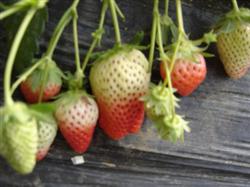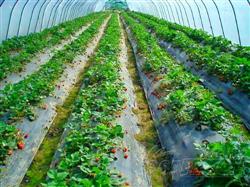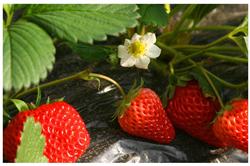Field management should be strengthened after strawberry harvest.

After strawberry berry harvest, the plant entered the vigorous growth stage, a large number of stolons occurred, new stem branches accelerated, and new young plants formed, which was the second peak period of vegetative growth in the whole year. Then, with the gradual increase of temperature, the growth began to slow down, and around the beginning of autumn, flower bud differentiation began and then turned to the stage of reproductive longevity. During this period, strawberry plants experienced hot, dry or rainy and waterlogged summer and autumn. If the management is relaxed, it will have a great impact on the growth and development of strawberries, and directly affect the yield and quality of strawberries. Therefore, field management should be strengthened in time after strawberry harvest. First, remove the stolon. The growth of stolon will consume a lot of nutrition of the mother plant and reduce the necessary nutrient accumulation of the plant, which not only affects the flower bud differentiation and the yield of the following year, but also reduces the overwintering ability of strawberry. Therefore, the stolon should be removed at any time after fruit picking. In the breeding nursery, not only the stolons that occurred in the later stage of the mother plant should be removed, but also the stolon seedlings and extended stolons formed prematurely should be removed so as to leave enough land space for the stolons that proliferate after autumn. At the same time, after the berry harvest, we have to cut off some of the old leaves, leaving only 3 young leaves just exposed on the plant. This measure can also reduce the occurrence of stolons and stimulate multiple new buds, thus increasing the number of flower buds and laying the foundation for increasing yield in the following year. Secondly, timely irrigation to prevent disasters. After fruit picking, strawberry is in the vigorous growth stage, has more demand for fertilizer and water, and is more sensitive to environmental conditions, especially the disasters of extreme heat, drought and waterlogging. Generally speaking, when the summer temperature exceeds 30 ℃, the growth of strawberries will be inhibited, no new leaves will grow, and sometimes the old leaves will be burned or scorched, so they should be watered or shaded in time. However, strawberry has shallow roots and small plants, and is sensitive to the change of soil temperature. Too much Rain Water and poor soil ventilation will not only affect the growth of plant roots and stems, but also cause root rot, increase diseases, and even suffocate the whole plant. Therefore, after fruit picking, the trench should be cleared and drained in time to keep the ground dry. Third, cultivate the soil by ploughing. The occurrence site of new root of strawberry increased year by year with the growth of new stem. Therefore, after strawberry harvest, soil cultivation should be combined with ploughing and weeding. The thickness of the soil should be exposed to the heart of the seedling. Fourth, strengthen the prevention and control of diseases and pests. After berry harvest, the main diseases and insect pests in strawberry field are red spider, leaf spot, gray mold and so on. It is necessary to spray 200 times Bordeaux solution or 800 times carbendazim solution in time. Insect pests can be controlled with insecticides such as trimethoprim. In addition, before the flower bud differentiation of strawberries (about August and September), about 20 kg of compound fertilizer should be applied per mu, or 0.2% of 0.4% potassium dihydrogen phosphate aqueous solution should be applied twice in the fountain to promote flower bud differentiation, and fertilization can be combined with soil cultivation.
- Prev

Pollution-free cultivation techniques of Strawberry in plastic greenhouse
㈠ varieties were selected with early flower bud differentiation, shallow dormancy and good cold tolerance in low temperature season, such as Chunxiang, Fengxiang, Lihong, Mingbao, Jingbao, Nufeng, Baojiao Zaosheng and so on. Cultivate strong seedlings by ㈡. 1. Select mother plants. The growth is exuberant and the inflorescence is good in the strawberry production shed from March to April of that year.
- Next

Cultivation techniques of Strawberry in protected Field
Strawberry is a kind of berry plant widely cultivated all over the world. It is rich in nutrition, juicy fruit, sweet and sour delicious, it is easy to breed, benefit quickly, take certain measures, planted in the same year can bear fruit. Strawberries like cucumbers, tomatoes and other vegetables, different mature strawberry varieties, reasonable combination of planting or.
Related
- Moge, come on! The staff of the peasant association in the producing area of cantaloupe were frightened when the crowd gathered.
- Causes and Solutions of low Fruit setting rate of Apple
- Symptoms and control measures of passion fruit virus disease
- Fruit growing lesson: how do apple orchards keep high yields?
- Can you build orchards in the mountains? What are the pros and cons?
- How to manage the coloring period of Crisson grape?
- This paper introduces the processing technology of two kinds of fig products.
- How much is a month for retired teachers in rural areas by 2020?
- How can strawberry planting increase sugar content? We should pay attention to management in many aspects.
- What are the cultivation techniques on how to improve the yield of golden fruit?

